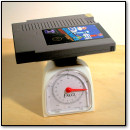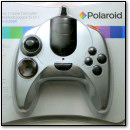
Ten years ago this month, Apple shipped the Power Mac G4 Cube, a unique computer that fared poorly in the marketplace but captured the imaginations of many computer enthusiasts. Naturally, I warmed up my dexterous typing fingers and wrote something about this anniversary. Well, two somethings, in fact, and they’re both up on Macworld.com today.
The first, “The Cube at 10: Why Apple’s Eye-Catching Desktop Flopped,” is an exploration of reasons why the Cube fared so poorly sales-wise.
The second, “Apple’s Cube Was Ahead of Its Time,” compares and contrasts the G4 Cube and the Mac Mini, exploring in particular why the Mini was successful when the Cube was not.
I’d like to thank my editor at Macworld, Philip Michaels, who always does an excellent job of distilling my work into crystal clear prose.
I Wanted One
On a personal note, when Apple announced the G4 Cube in 2000, I thought it was amazing and I immediately wanted one. Although I’d traditionally been a PC-clone user, I had been following Apple news closely since the return of Steve Jobs in 1996.
Of course, I couldn’t afford a Cube, so I simply pined away and read about others’ Cube experiences online. I remember the “cracks” issue being a fiasco in the news after the Cube’s release (one my articles discusses that issue), which seemed embarrassing for Apple.
Overall, I’m glad I didn’t buy one, because they were very expensive. I’m lucky I only had a credit card with a $200 limit (Amazingly low, isn’t it? That was just before banks started throwing high-APR credit at everyone and their brother. Now I can’t get them to stop raising my limit.) I still don’t own a Cube, so if anyone wants to donate one to the cause, I’d be willing to listen.
Anyway, I hope you enjoy the articles. Feel free to share your G4 Cube memories below.
 All telephones should look like this. (click above for full scan)
All telephones should look like this. (click above for full scan)














